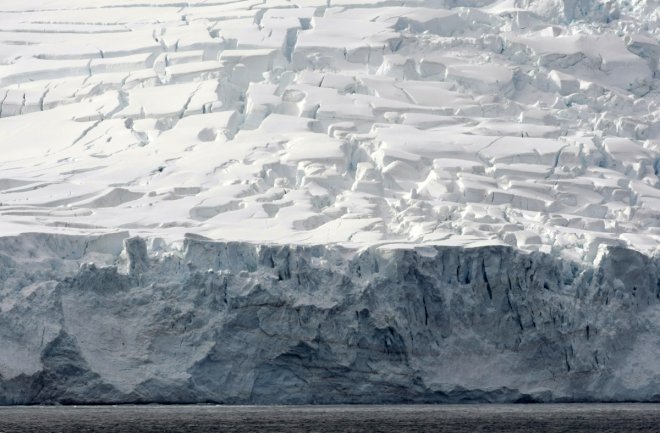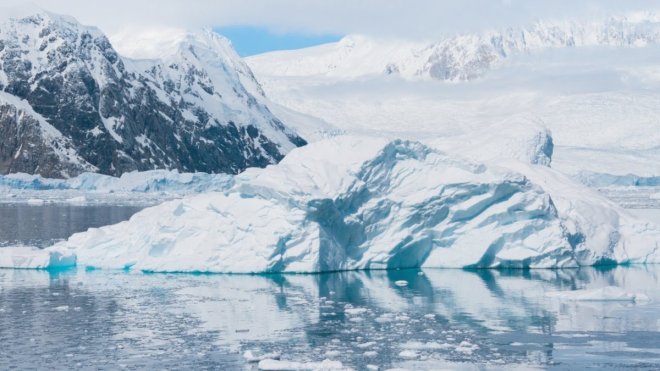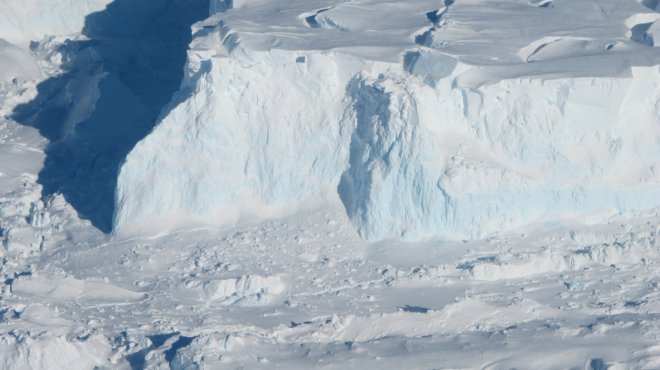
NASA reported earlier this month that a huge chunk of the iceberg has gotten detached from one of the largest floating ice shelves, Larsen C, of Antarctica. This event has, undeniably, generated concerns among scientists across the world as such incidents have become common due to the extreme level of global warming.
Now, adding to the list of impending dangers caused by climate change, one meteorologist has said that we are possibly facing the potential threat of an "ice apocalypse." He added that it would only take two major glaciers of Antarctica to collapse in order to unleash the disaster.

Meteorologist Eric Holthaus mentioned Thwaites and Pine Island glaciers of Antarctica in his latest article, published in Grist, and also explained how these two ice-masses have "marched steadily for millennia" towards the Amundsen Sea. Both of these glaciers, as described by Holthaus, are currently preventing a rise in sea-level, which can go up to 11 feet should they meltdown and if that happens, the amount of water released would be enough to drown all the coastal cities across Earth. While the author is positive that this will happen in the future, the key question now remains is 'when?'
"Finding out how fast these glaciers will collapse is one of the most important scientific questions in the world today," wrote Holthaus.
Possibly the Pine Island glaciers had collapsed around 11,000 years ago due to a condition, known as "marine ice-cliff instability,". As per Holthaus, the temperature of Earth at that time was more or less similar to that of today. Another instance of "marine ice-cliff instability," which earlier has been said to be a possible "feedback loop," could cause the melting of the West Antarctic ice sheet. It would then disintegrate much faster than actually forecasted, originating another "global catastrophe."
The melting of the ice sheet at Pine Island has been quite dramatic, noted National Geographic. As per the report, its ice shelf lost almost 150 feet of ice within the time period of 1994 to 2012. Right now, it is just about 1,300 feet thick. The report also mentioned the dangers that can be caused by the Thwaites Glacier, as it is "more worrisome," and if it collapses, it would probably destabilize a vast lump of the ice sheet from West Antarctica.

Predicting the answer to the key question Holthaus said in his article that the Pine Island and Thwaites glaciers may fall down within just about 20 to 50 years from now if the global warming keeps increasing at the current pace. Needless to say, if his prediction is true, we don't really have much time to take necessary measures to avoid the apocalypse.
"A wholesale collapse of Pine Island and Thwaites would set off a catastrophe. Giant icebergs would stream away from Antarctica like a parade of frozen soldiers. All over the world, high tides would creep higher, slowly burying every shoreline on the planet, flooding coastal cities and creating hundreds of millions of climate refugees," wrote the meteorologist.
The aftermath of sea-level rise, following the melting of the glaciers, would be varied in different parts of the world. Holthaus explained, mentioning an earlier study by climatologists David Pollard and Rob DeConto, that first of all it could cause a three-foot rise of the sea-level, which is capable of causing a severe flood in major US cities like New York, Miami, New Orleans and several other coastal areas. On the other hands, if the sea-level elevates up to six-feet, around 12 million US citizens could be swayed and also it may wipe out several cities in Asia, such as Mumbai, Ho Chi Minh City, Shanghai and more.
While a three-feet rise is the most optimistic situation according to the scientists and the six-feet rise is the most likely one, the worst scenario would be a rise of 11-feet in the sea-level. If, indeed, that happens, "hundreds of millions of people" would be submerged under the heavy flow of water. Holthaus noted that New York and South Florida, under these circumstances, would likely face floods similar to the ones that had occurred during Hurricane Sandy and that too twice a month.
Although several experts have predicted the similar apocalypse theory, Holthaus also mentioned some, who still believe that further research is required before coming to the conclusion. On a positive note, Ted Scambos, the lead scientists of the National Snow and Ice Data Center, said that may be Pine Island and Thwaites glaciers will not fall down at the same time. Even if a rapid collapse takes place, the fallen ones may create a temporary "pile of icebergs" that would slow down the melting cycle in Antarctica, added the scientist.
With the stakes being so high, Eric Holthaus concluded his article by hoping that the world makes "fast transition" from all the things that cause and increase global warming, such as the use of fossil fuels. According to him, if we can achieve that, the "ice apocalypse" could be postponed "for centuries."









